The Samsung Galaxy S9 and S9+ Review: Exynos and Snapdragon at 960fps
by Andrei Frumusanu on March 26, 2018 10:00 AM ESTCamera - Low Light Evaluation
We move onto low light shots. This is the part where we have large expectations of the S9 as the new wider aperture and multi-frame noise reduction processing promise great improvements in quality.
[ Galaxy S9 ] - [ Galaxy S8 ] - [ Galaxy S7 ]
[ Pixel 2 XL ] - [ Pixel XL ] - [ P10 ]
[ Mate 9 ] - [ Mate 10 ] - [ G6 ] - [ V30 ]
[ iPhone 7 ] - [ iPhone 8 ] - [ iPhone 8 Plus ] - [ iPhone X ]
In this scene again to give the best apples-to-apples comparison between the devices I shot the samples at different exposure modes, focusing on different parts of the pictures.
The scene was naturally very dark and the Galaxy S9 in auto mode did a good representation of this. However this is still too dark for actual picture usages on a monitor so focusing on a darker part of the scene brought up the exposure and details in the darkness. Against the S8 the S9 gains details in the shadows but otherwise the two phones post very similar processing with the S9 being in the lead.
In terms of the competition the Pixel phones are clearly the devices to beat here. Google is able to retain a lot more details in textures as the phones use far less heavy processing. This results in a noisier picture than the Galaxy S9 but I think it’s overall better because of the detail retention. The iPhone 8 as well uses less processing and sharpening, able to retain more of the natural textures of the scene, again, at the cost of higher noise.
Which phone is best will come down to preference as the different phones have different compromises. The S9 is sharp and bright with little noise, but loses on texture detail. The Pixels and iPhones are noisier but retain better the textures of the scene.
[ Galaxy S9 ] - [ Galaxy S8 ] - [ Galaxy S7 ] - [ Pixel 2 XL ]
[ Pixel XL ] - [ P10 ] - [ Mate 9 ] - [ Mate 10 ] - [ G6 ]
[ V30 ] - [ iPhone 7 ] - [ iPhone 8 ] - [ iPhone 8 Plus ] - [ iPhone X ]
In the second low-light scene we have another challenging scenario with a lot of dark area and a few highlights.
Here the Galaxy S9 dominates the competition as it produces by far the best results. The processing style is similar to the S8 however the S9 just produces more detail and less noise. Google’s Pixel devices did not do well at all in this shot and the result is a fuzzy noise picture even though light capture and dynamic range seems adequate. The Pixel phones did manage the best colour representation of the sodium lamps, although it doesn’t rescue the end result. The new iPhones do a good job, but it’s not enough against the Galaxy S9 or even S8.
The best contender against the S9 here is in my opinion the V30 as although it produces less light than the S9, it manages to retain a great amount of detail on the bridge, at least compared to all other phones. The V30 here also sees a comparison shot with the new “Bright Mode” that was introduced with a firmware update following the MWC announcement of the V30s. This allows for 2x2 pixel binning and increased light capture, but naturally with a resulting picture which has only 1/4th of the pixels and thus much less detail.
[ Galaxy S9 ] - [ Galaxy S8 ] - [ Galaxy S7 ] - [ Pixel 2 XL ]
[ Pixel XL ] - [ P10 ] - [ Mate 9 ]
[ Mate 10 ] - [ G6 ] - [ V30 ]
[ iPhone 7 ] - [ iPhone 8 ] - [ iPhone 8 Plus ] - [ iPhone X ]
The next scenic scene has a lot more lights scattered through the frame. The Galaxy S9 again noticeably improves the sharpness over the Galaxy S8 while retaining the same colour tones and overall processing. The Pixels didn’t do well in terms of colour balance and also have less detail than the S9 and iPhones. The new iPhones are indeed the contenders for second spot here as the iPhone 8’s and X beat the Galaxy S8 in terms of detail, but fall short of the S9’s capabilities. The V30 also did extremely well in preserving detail and noise, however like in the last scenario comes at the prices of darker shadows with less features.
[ Galaxy S9 ] - [ Galaxy S8 ] - [ Galaxy S7 ] - [ Pixel 2 XL ]
[ Pixel XL ] - [ P10 ] - [ Mate 9 ]
[ Mate 10 ] - [ G6 ] - [ V30 ]
[ iPhone 7 ] - [ iPhone 8 ] - [ iPhone 8 Plus ] - [ iPhone X ]
This scene with a lit statue even when looking close is hard to differentiate between the S9 and S8. The S9 does an ever so slightly brighter image and better detail retention, but the differences aren’t that big. The Pixel phones and the Pixel 2 in particular produce a much brighter image with the larger dynamic range, however this comes at a cost of lack of sharpness and more noise. The V30 follows the S9 in terms of overall exposure and in terms of details it seems a tie between the more processed S9 and the softer, but higher resolution of the V30. The S9 does better in the highlights. The iPhones do a brighter picture than the S9, but lose in terms of details and noise.
[ Galaxy S9 ] - [ Galaxy S8 ] - [ Galaxy S7 ] - [ Pixel 2 XL ]
[ Pixel XL ] - [ P10 ] - [ Mate 9 ]
[ Mate 10 ] - [ G6 ] - [ V30 ]
[ iPhone 7 ] - [ iPhone 8 ] - [ iPhone 8 Plus ] - [ iPhone X ]
The next scene follows the characteristics of the last one. The Galaxy S9 does ever so slightly better than the S8. The Pixels again retain more light but with a resulting fuzzy picture. The V30 and new iPhones are the real contenders to the Galaxy S9 with the V30 taking second place to the S9.
[ Galaxy S9 ] - [ Galaxy S8 ]
[ Pixel 2 XL ] - [ Pixel XL ] - [ P10 ] - [ Mate 9 ]
[ Mate 10 ] - [ G6 ] - [ V30 ]
[ iPhone 7 ] - [ iPhone 8 ] - [ iPhone 8 Plus ] - [ iPhone X ]
This scene is a lot brighter than the previous scenarios due to the street lighting, so the quality of the results should mostly fall onto the characteristics of the camera processing.
Between the Galaxy S9 and S8 we see the same overall picture exposure level. The S9 is able to achieve a higher dynamic range and less blown-out highlights of the street lamps thanks to its wider aperture and quicker exposure time, compared to the S8. While at first glance the pictures are similar, when looking at the details it seems as though the S9 regresses on the details compared to the S8. This is especially visible in the foreground objects such as the pavement or the shop front on the left. This loss of detail is less pronounced further in the middle of the image and down the street so I think what’s happening is that the S9’s shallower depth-of-field because of the wider aperture is working against its favour in this shot.
The Pixels again don’t retain enough detail so can’t compete against the S9 and S8. The iPhones showcase an extremely close exposure to Samsung’s phones. Apple’s devices are very close to the S9 in the foreground but lose out in detail further down when the S9 is in its optimal focal plane. The V30 produces an overall darker image, but this helps with preserving the highlights. In terms of detail it’s relatively even to the S9 but it depends on which parts of the picture are being compared as they have different exposures.
[ Galaxy S9 ] - [ Galaxy S8 ] - [ Galaxy S7 ]
[ Pixel 2 XL ] - [ Pixel XL ] - [ P10 ] - [ Mate 9 ]
[ Mate 10 ] - [ G6 ] - [ V30 ]
[ iPhone 7 ] - [ iPhone 8 ] - [ iPhone 8 Plus ] - [ iPhone X ]
The last scene is about sheer light capture and to see who resolves best the shadowy-details. In this scene the Galaxy S9 makes full use of its wider aperture and provides a lot more clarity and less noise than the S8. The Pixels do a gain a much better job at capturing the correct colour balance of the sodium lamps but, but again can’t compete in terms of detail. The V30 continues its trend of producing darker images which helps keep down noise and still retain a respectable amount of detail, however just can’t bring out features in the shadows. This leaves the new iPhones as the only contenders. Apple, similarly to Google, does a better job than Samsung in terms of colour temperature. When it comes to detail, the iPhone 8’s and X are more on the level of the Galaxy S8 and the S9 retains its lead.
Overall the Galaxy S9 provided the best low-light shots among the test smartphones through its ability to retain more detail. In dark scenes the S9 doesn’t have the same consistency issues that we saw in the day-light shots and I found the S9, similarly to its predecessors, to provide a good a repeatable experience. The advantages over the S8 will depend on lightning and scenery. In the worst low-light scenarios the S9 will hold a good lead over the S8, but in other scenarios when there’s a bit more light the differences are less pronounced. There’s some rare cases where the S9 could do worse than the S8 and that’s simply due to the nature of the optics and the shallower depth of field of the F/1.5 lens.
In terms of competition, I think Apple’s new iPhones are overall the most competitive against the S9 in low-light and showed the best balance across the shots. Google had the best low-light colour balance, but in some scenes just had too much noise resulting in fuzzy images. Huawei in general had a tough time competing and their monochrome sensor solution just didn’t work out. LG’s phones were very good as well however Samsung edged them in in detail.


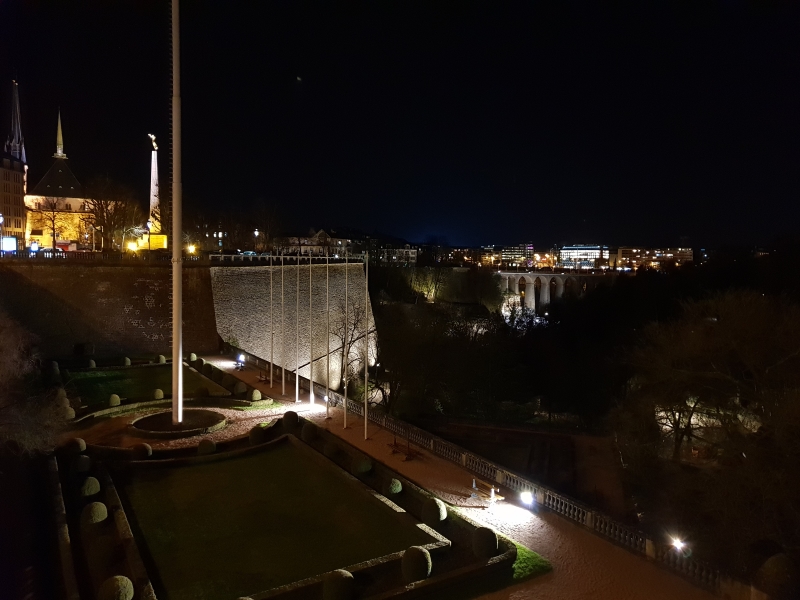




















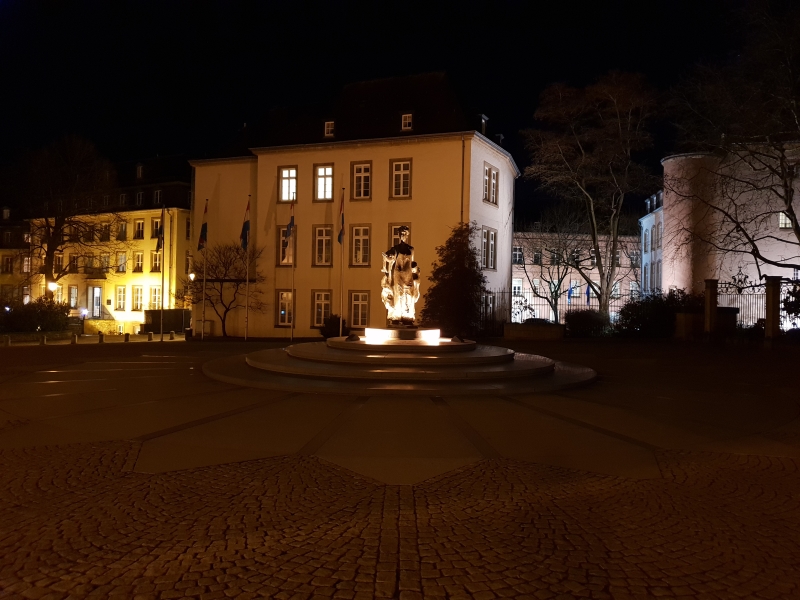






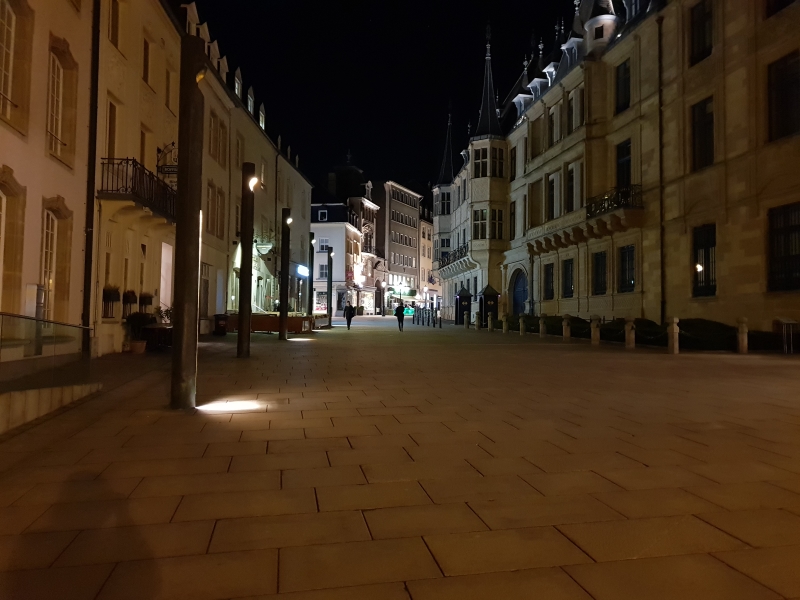






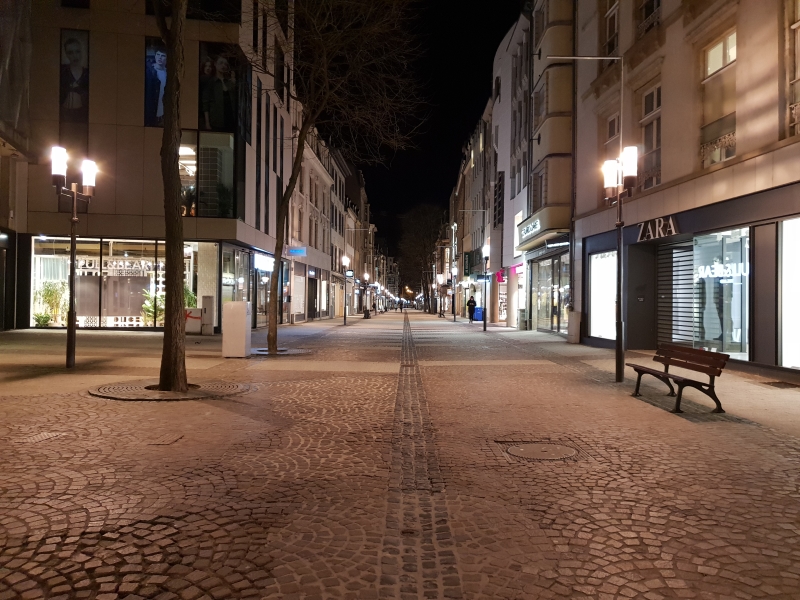






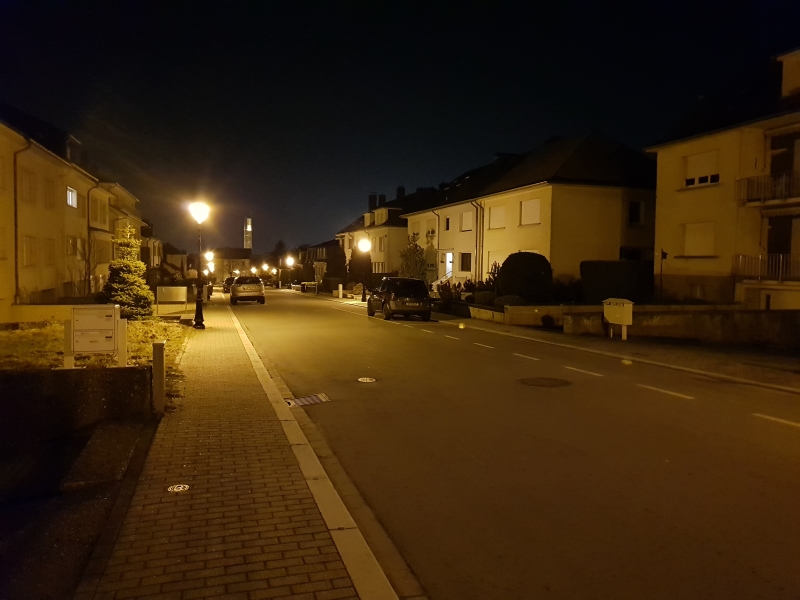














190 Comments
View All Comments
peevee - Friday, April 6, 2018 - link
Essential 2?Given small real-life difference between 845 and 835, Essential PH-1 is still a great device. And very appropriately priced. Nothing to wait there.
StrangerGuy - Tuesday, March 27, 2018 - link
All the S9 did was made me appreciate my S8+ more, of which I only bought because of generous employer benefits. Without which I wouldn't even have cared about these overpriced flagships.Valantar - Tuesday, March 27, 2018 - link
I pointed this out in your S9 launch article, and apparently I have to make my point again: neither light nor depth of field is the reason for the aperture change - it's purely to combat distortions and lack of sharpness in the image due to the combination of a large aperture and tiny, tiny glass.Why? When it comes to depth of field, one needs to factor in not only the aperture, but also the crop factor (sensor size relative to standard 35mm film). As such, f/1.5 on a standard cell phone 1/2.3" sensor is roughly equal to f/8.4 on a 35mm sensor, or f/5.6 on an APS-C sensor. This is one of the main photographic advantages of large-sensor cameras: that you can get shallow depth of field with lenses that are actually possible to manufacture.
An example: https://dofsimulator.net/en/?x=EAyAeuF3AAAIJEwkAAA...
As you can see here, with a 1/2.3" f/1.5 sensor, focusing on a subject 3m away gives you an in-focus area of ~43m - this is NOT too little, not by any measure. Moving the subject to 5m gives you effectively infinite focus, with everything from 1.9 to infinity being in the focal plane. You'd need your subject at less than .5 meters for DoF to be an issue - which it would be with most cameras at that distance.
On the other hand, it's well known that for large apertures, anything but the best glass will lead to aberrations and distortions in the image, and a general loss of sharpness across the frame. Look at even a single DSLR lens review - they're _always_ sharper when stopped down. With a lens stack this tiny, there's no feasible way to control this - it's likely physically impossible to avoid aberrations and distortions at an aperture number like this. Hence, the variable aperture.
Now, AT is usually very accurate in their reporting. Could you PLEASE correct this? Pretty please? Since you claim to be doing a deep-dive into the camera, this is not a good look.
Valantar - Tuesday, March 27, 2018 - link
To clarify: You say that "The F/2.4 aperture in day-light shots is not a gimmick and very much an advantage to the S9 as its deeper depth of field is noticeable in shots, producing sharper images than the F/1.5 aperture." This is a misunderstood conclusion. The added sharpness is largely not due to a deeper depth of field, but rather due to the stopped-down aperture resulting in a generally sharper image. This conflates two different characteristics, focus depth and lens/optical sharpness. These are not the same. If you did a more rigorous test where both cameras focused on the same spot (ideally not in the centre of the image) in a scene with sufficient depth, or conversely shot against a flat target with a lot of detail, you'd likely see this pretty clearly, as _even the focal point_ would be sharper at f/2.4. If this was due to depth of field, both settings would be equally sharp at the focus point, while what you're saying here is that f/2.4 is sharper _across the image_. That's a typical effect of a smaller aperture improving sharpness, not of the smaller aperture restricting DoF.peevee - Friday, April 6, 2018 - link
" _even the focal point_ would be sharper at f/2.4"If it is the center, it might not be so because with such tiny sensor, at f/2.4 maximum resolution is diffraction-limited. Need the exact size of the sensor to confirm, but I am almost sure than even at f/1.5 Airy disk is bigger than a pixel.
Takethis - Tuesday, March 27, 2018 - link
Any chance they Samsung could fix their “slow-and-steady” DVFS approach with software updates? Given the actual state of things, Snapdragon 845 phones are the one to buy this year (I'm thinking Oneplus 6)Ankurg - Tuesday, March 27, 2018 - link
With due respect to the author and the site, I have to believe that most of the extensive tests and their results will not affect the avg day-to-day usage of this device.I am already seeing the panic this review has created on reddit, with many people now re-thinking whether to purchase or not...
Yes, most youtube/site reviewers don't go as deep as this, but a problem so steep would have been felt.
I would advice my fellow mates here not to lose sight of the fact that this is the best android phone you can buy right now.....irrespective of the choice of chip.
SirCanealot - Tuesday, March 27, 2018 - link
"With due respect to the author and the site, I have to believe that most of the extensive tests and their results will not affect the avg day-to-day usage of this device."While I'm happy to have a super-fast phone with crappy battery life, I'm not happy to have an average-speed phone with crappy battery life. IE, I have a Exynos Note 4 which is fast with crappy battery life and it still does the job...
The crappy battery life is going to effect every single user and every one of your friends in America is going to get a better performing phone with better battery life. Day-to-day I'm getting worse performance and battery life; this means I can re-consider my options now I have all the data.
Why shouldn't this review make you reconsider? That's what it's meant to do. Unless you're a Samsung shareholder, I wouldn't pay any attention to this completely normal thing of human society...
id4andrei - Tuesday, March 27, 2018 - link
The author himself stated that you will not see any difference as an ordinary consumer. Some slight circumstantial scrolling stutters are all he noticed.Still the Exynos underperforms relative to its advances in chip design.
peevee - Friday, April 6, 2018 - link
"The author himself stated that you will not see any difference as an ordinary consumer."Nope. The fast core only winding up after 0.4s is VERY noticeable as good phones will already finish launching an app or rendering a local HTML in Webview by this time, some time ago.